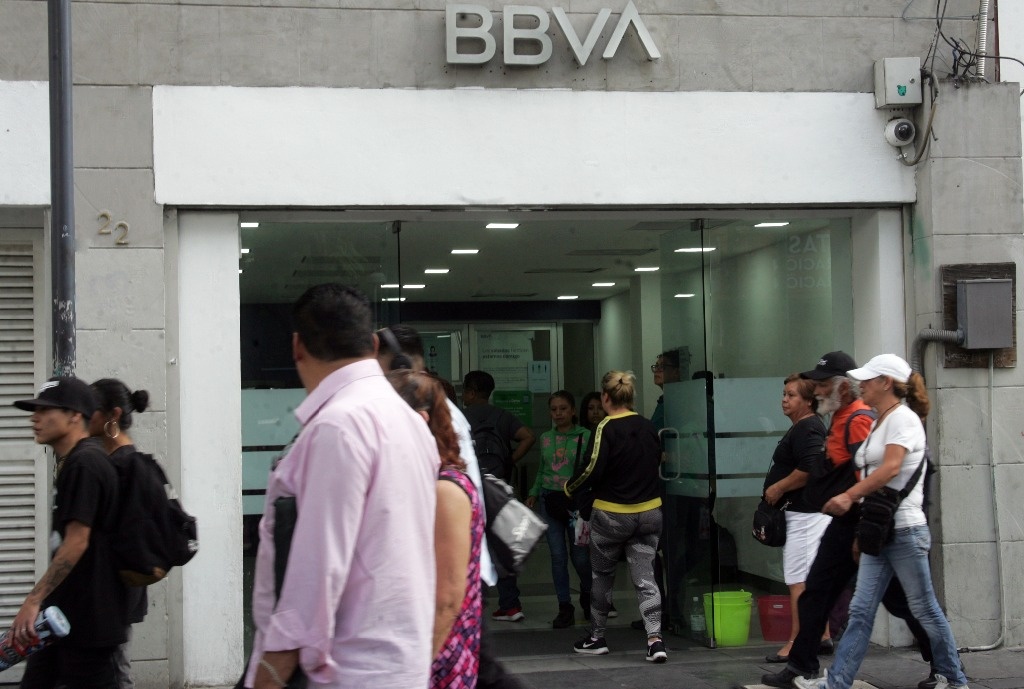Mexico City. Mexico can maintain its investment grade in the next two years, but if the debt reaches 60 percent of the Gross Domestic Product (GDP) it can lose it, BBVA predicted.
“Public debt could approach 60 percent of GDP at the end of 2030 and the investment grade would most likely be lost if there was no fiscal discipline,” commented Carlos Serrano Herrera, chief economist at BBVA Mexico.
“If medium-term fiscal consolidation is not achieved in which Mexico has lower deficit levels, close to 2 percent, we think that by the end of the administration the debt could be reaching levels close to 60 percent of GDP and There is a significant risk that the investment grade could be lost,” he added in the presentation of the Mexico Situation report prepared by BBVA’s Economic Studies area.
The financial institution predicts that the public debt in 2024 will be 50.8 percent of GDP and the public deficit will be 5.0 percent of GDP, which is the highest level in the last 35 years.
“We believe that the macro (macroeconomic) fundamentals that remain in the fiscal sector until now help support the prospects that Mexico can maintain the investment grade in the short term, during the next two years,” commented Iván Fernández Mendiola, economist BBVA Mexico senior at the event.
He stressed that it is important to review the Mexican fiscal framework to increase collection, and that the most efficient way to do so is to reduce informality and continue fighting evasion, as well as change Pemex’s business model so that it represents less pressure on the public finances in such a way that lower deficits can be achieved.
“Because otherwise, we do believe that in the coming years there is an investment grade risk,” he reiterated.
Recession risks
BBVA analysts maintained that they cannot rule out a recession. They explained that if the judicial reform generates uncertainty among investors because it will not be known for a year how it works and who the judges are, it would generate a negative shock to investment.
Furthermore, if the government decides to lower spending to reduce the deficit from 5.9 to 3.0 percent, it will have a negative impact on growth, in addition to a possible slowdown in the United States. “All this could result in a recession in Mexico,” Serrano asserted.
He highlighted that the Mexican economy will slow down significantly because there is less public and private investment in the flagship infrastructure projects that were carried out in the last six-year term and that are about to conclude.
In turn, the lower growth is foreseeable due to the slowdown in the manufacturing sector in Mexico, as a consequence of the fact that this market is also expanding at a slower rate in the United States.
The analyst reported that the financial institution revised downward the outlook for Gross Domestic Product (GDP) growth to 1.2 percent in 2024 and 1.0 percent in 2025.
At the beginning of the year, BBVA’s expectation was 2.5 percent in 2024 and 2.4 percent in 2025.
Greater drop in rates
Fernández Mendiola highlighted that weaker economic activity drives a better inflation outlook and that the Bank of Mexico has room to cut interest rates.
BBVA expects that in the fourth quarter of 2024 inflation will close at 4.8 percent and by 2025 there will be a sustained return towards the Bank of Mexico’s target range.
Fernández explained that the monetary policy of the Mexican central bank is one of the most restrictive in the world and that many members of the Governing Board of the Bank of Mexico are willing to promote a cycle of lower interest rates.
He even detailed that two cuts of 25 basis points are expected in November and December, and that in the third and fourth quarters of 2025, the central bank will lower the reference interest rate by 50 basis points to bring it to 7.50 percent.
#Mexico #maintain #investment #grade #years #estimates #BBVA
–


